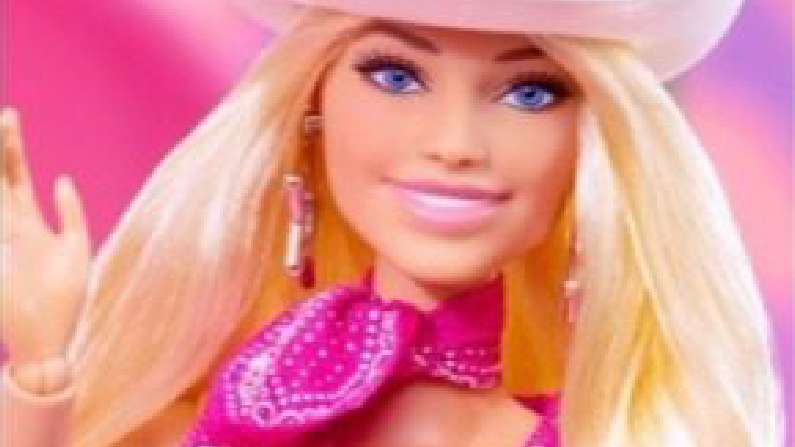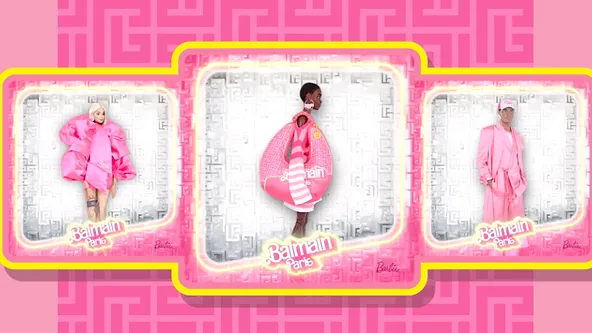Barbie, the iconic doll created by Ruth Handler in 1959, has been a dichotomy of both controversy and enduring popularity since she debuted. Her awesome fashions and many careers continue to tap into the evolving self-perception of women in western society. However, while beloved by many, Barbie has also faced criticism for perpetuating unrealistic beauty standards among girls. With the original Queen B. on everyone’s lips this week with movie buzz, I decided to take a look at the marketing and movement behind the mega star doll. Let’s dive into who Barbie was, who she is now, and who she could be in the future.
BARBIE, THE GLOBAL INFLUENCER
Barbie’s portrayal of an idealized beauty has been a point of contention, with critics arguing that her proportions set unattainable standards for young girls. However, Barbie’s continued popularity suggests that she still resonates with a significant portion of the market. Despite the criticism, her influence on the self-perception of girls and women cannot be ignored as she has become deeply ingrained in popular culture since her inception.
Over the years, Barbie’s gone from toy store shelves to Twitter. The doll’s lasting appeal can be attributed to her ability to adapt to changing times while maintaining her iconic essence. From the classic blond hair and blue eyes Barbie to diverse body types and ethnicities, she has evolved to reflect a broader representation of beauty. There is a dizzying array of literally hundreds of Barbies available for sale on the Mattel website. From 2019 to 2020, Mattel released new variations of Barbie with more skin tones, textured hair, no hair, prosthetics, and even gender-neutral options; all to create a doll that looks more like the people that play with her. Mattel now calls Barbie “the most diverse doll ever made.”
More skin tones!
More body types!
More unique looks!
Express yourself with #Barbie #Fashionistas – the most diverse doll line. 💕 Shop now: https://t.co/zTVjMZsjVy. #WeAreBarbie pic.twitter.com/l176Wvzj0z— Barbie (@Barbie) January 28, 2020
BARBIE’S SUSTAINABILITY
Barbie’s fashion-forward outfits have reflected contemporary trends, capturing the imagination of countless children and collectors alike. In fact, I had a Barbie as a young girl. I collected her outfits and accessories veraciously until my much older sister threw them all out one day to my dismay. She said, “You’re too old for these dolls, Simone.” I was eleven years old, and I was devastated. For me, my many Barbies of varying skin tones and hair textures represented an external sense of style. I saw her on television, in magazines, and lavishly displayed at toy stores. She was glamorous and lived a life that I wanted for my future. Afterall, who doesn’t want a dreamhouse in Malibu and convertible sports car with matching speedboat? Apparently, grown-ups still want Barbie inspired toys. A brand collaboration with Maserati and Neiman Marcus created three limited edition Grecale Trofeo SUVs decked out in bespoke hot pink style. A portion of sales will be donated to the Barbie Dream Gap Project to remove barriers and help girls reach their limitless potential. From my perspective, the key to Barbie’s sustainability is her awareness of pop cultural. Mattel has played this game masterfully through Barbie’s fashions, evolving physical appearance, and brand partnerships. Additionally, Barbie fashion shows and exhibitions offer fans an opportunity to engage with the brand, contributing to her longevity, cultural significance, and nostalgia.
BARBIE’S EVOLUTION
The first-ever Barbie live-action movie from Warner Bros. Discovery launches on July 21, 2023 to the deafening sound of big media promotion and cheering fans. Greta Gerwig’s vision of Barbie is so exciting because the story marks a significant departure from Barbie’s traditional narrative of the hot pink fantasy in heels with a constant smile. Instead of seeking perfection and conforming to unrealistic ideals, the film showcases Barbie going to the real world, embracing authenticity, and finding self-acceptance. This evolution represents a response to the criticism leveled at Barbie through the years and a reflection of the changing societal attitudes toward beauty and femininity.
"*" indicates required fieldsSubscribe to our contact list
The future of Barbie holds exciting possibilities as she continues to evolve in the digital landscape. With over 20 million social media followers and counting, Barbie has solidified her position as one of the top three virtual influencers, globally. The Barbie brand continues to leverage emerging technologies, like NFTs and augmented reality, to tap into a new generation of fandom. Mattel partnered with Balmain in 2022 to create a historic collection of Barbie fashion NFTs, while AR filters have recently launched on Snapchat to promote the Barbie movie. So, what’s next?
ENTER THE BARBIE-VERSE
I can see the Barbie Dreamhouse moving to a Metaverse address and creating a dynamic future for the iconic brand. A recent collab with Roblox and Forever 21 just gave us new virtual Barbie clothes. Now, she’s ready to move into the Warner Bros Discovery Sanbox space. Imagine the hot pink Barbie-verse in augmented reality. It’s a great way to expand the community of adult fans, plus deliver immersive brand experiences. The digital realm opens endless opportunities for Barbie, ensuring she remains a relevant and influential figure for generations to come.



